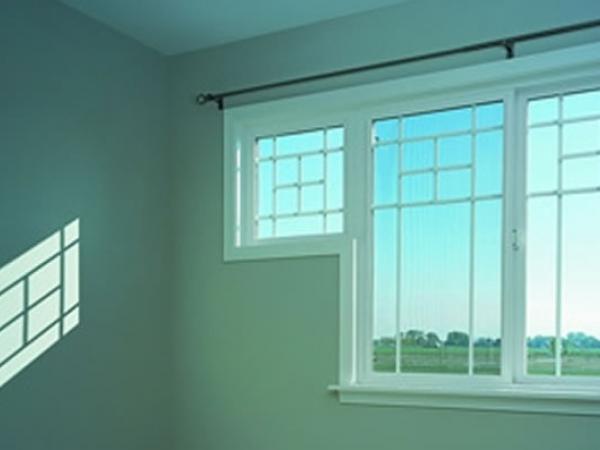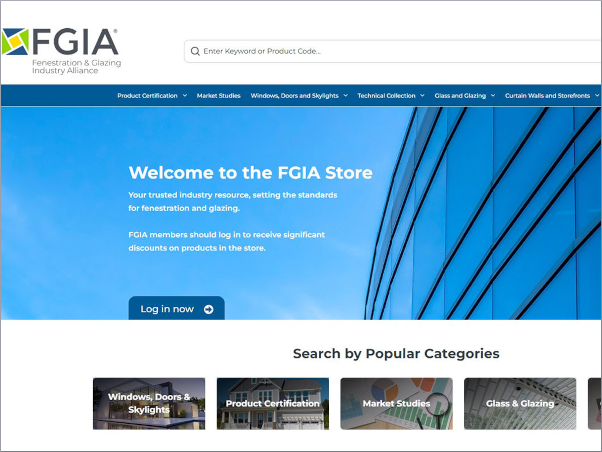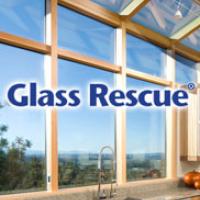
Date: 3 August 2017
Further efforts in these endeavors will continue this October at the AAMA National Fall Conference in Greenville, SC.
Installation Standard Review Focuses on Stucco Interface
Having been earmarked for review by the Document Management Committee, AAMA 2400-10, Standard Practice for Installation of Windows with a Mounting Flange in Open Stud Frame Construction for Low Wind/Water Exposure, was the subject of preliminary recommendations submitted by volunteer Kim Flanary (Milgard). Aside from editorial updates to better align with ASTM E2112-07 (2016), proposed changes focused on window installation with stucco siding. To cure the problem of stucco cracking due to thermal expansion or contraction of window frames, it was recommended to specify use of a stucco key in the post-installation section. A stucco key, installed so that backer rod and sealant are not required, establishes a quarter-inch gap around the window to allow for thermal movement and provides a finishing point for the stucco.
To finalize the AAMA 2400 update recommendations, the Council established a task group, to be chaired by Flanary.
AAMA 504 Load Test Parameters Specified
AAMA 504-05, Voluntary Laboratory Test Method to Qualify Fenestration Installation Procedures, is being updated by the responsible task group (Chair: Jim Katsaros [DuPont]). Recently, Draft 9 was balloted to the product group, with most comments being judged as substantive. Section 9 has posed the most areas of concern, and has been rewritten to address test cycling load magnitude, cycle duration and total number of cycles to be administered (per ASTM E2264 as referenced in the 504 document). The task group agreed to set the number of cycles at 10 for a duration of 10 seconds each. Load magnitude and references to the ASTM E330 (structural test under a static air pressure difference) Procedure A, vs. ASTM E2357 for air leakage testing, still need to be clarified. The rewritten portions will be re-balloted.
Flashing Standards Refine Test References for Water Drainage and Crack Bridging
With the final number of required voting individuals weighing in at the last minute, Draft #3 of the pending update to AAMA 711-13, Voluntary Specification for Self-Adhering Flashing Used for Installation of Exterior Wall Fenestration Product, was successfully balloted to the product group. Several substantive comments were reviewed during the Summer Conference by the Flashing Committee (Chair: Jim Katsaros [DuPont]). The standard spells out methods for testing resistance to water penetration around nails and evaluates how well a self-adhering flashing tape remains bonded to the substrate after thermal cycling at three levels of heat exposure and water immersion.
Given that 711 has no allowance for a flashing tape that drains tape to the exterior, the latest round of discussion resulted in the recommendation that AAMA establish a measure of such drainage, using a test fixture that has already been developed. ASTM E2273, Standard Test Method for Determining the Drainage Efficiency of Exterior Insulation and Finish Systems (EIFS) Clad Wall Assemblies, was posed as the reference for acceptance criteria.
The status of the crack bridging study, being performed for the review of the AAMA 714 standard for liquid-applied flashing, was examined, centering on conclusions indicated by round robin testing. The protocols of ASTM C1305, Standard Test Method for Crack Bridging Ability of Liquid-Applied Waterproofing Membrane, were reviewed for applicability. It was noted that testing at the manufacturers’ recommendations for test specimen thickness – as opposed to the thicker samples specified in ASTM C1305, yielded mixed results. It was ultimately decided to modify 714, Section 5.6, to test specimens of the manufacturer’s specified thickness at class I and class II, and to specify the C1305 testing temperature at -26°C (-15°F). Given that some manufacturers recommend a range of thickness, a note would also be added to specify that the manufacturer’s minimum recommended thickness should be used for testing. Table 7 for acceptance criteria was updated accordingly.
ROESE Functionality Needs Definition
The ROESE Feasibility Task Group (Chair: Jim Katsaros [DuPont]) reviewed the status of the HIRL (Home Innovations Research Labs) /DOE Project as part of its effort to develop a standard for installation of windows into FPIS walls that would specify the use of Rough Opening Extension Support Elements (ROESE) for certain situations. It was noted that the FPIS document published last year by the HIRL/DOE group lacked material requirements and did not include standards for the structural support of a window. HIRL was reported as conducting a study on the latter that disproportionately emphasized foam products. An advisory letter was sent to HIRL on XX date (see Rich Rinka for specifics – that letter already went out).
Ballot Responses Sought for Joint Installation Document
The Joint AAMA/FMA/WDMA Replacement Window Task Group (Chair: Jim Katsaros [DuPont]) notes that the latest draft of the document is still open pending responses to the latest ballot which was due July 10. Voting members are requested to respond as soon as possible.
AAMA 800 Fine Tuning Continues
The current revision draft to AAMA 800 was successfully balloted to the product group. The Sealants (AAMA 800) Maintenance Committee (chair: Mark Toth [H.B. Fuller) reviewed substantive comments to the ballot, which focused on how the standard addresses long term UV exposure. A disclaimer that had been added to Note 2 in Section 5 on Exterior Perimeter Sealing Compounds used the term “long term” without defining what long term meant, so it had to be resolved whether to define the length of exposure or to simply state that the standard did not address this aspect. The latter approach was adopted and Note 2 accordingly revised to state that long-term exposure is beyond the scope of the document and directing the reader to contact the manufacturer. Meanwhile, the Exterior Sealant Long-Term Durability Work Group, formed at the February annual conference to more fully address the issue, had not as yet met.
Meanwhile, the AAMA 812 Insulating Expanding Foams Task Group (Chair: Beverly Selle [Dow Chemical]) awaits results of balloting before determining additional efforts.
Standard Updates Continue
The 2017 Summer Conference logged continued progress in the development of new and revised standards:
- Foam sealants standard nears publication. The new Voluntary Standard for Pre-Compressed Impregnated Foam Sealants successfully passed Council ballot by the Task Group (Chair: Brain Gagne [Tremco) and detailed substantive comments to section 6 were successfully resolved.
- Divided lites standard ready for balloting. The AAMA 813 Simulated Divided Lite (SDL) Task Group (Chair: Joe Pufahl [Adchem]) deemed the document edits complete and forward it to AAMA staff for preparation for balloting to the full task group membership. AAMA 813 establishes minimum performance criteria for adhesive systems used to attach SDL bars to glass.
- AAMA 851 to be reviewed. A task group, to be led by Steve Altum of Dow Corning, was formed to initiate the review of AAMA 851-09, Fenestration Sealants Guide for Windows, Window Walls and Curtain Walls. The standard was among those identified earlier as due for updating by the Document Management Committee.
 600450
600450













Add new comment